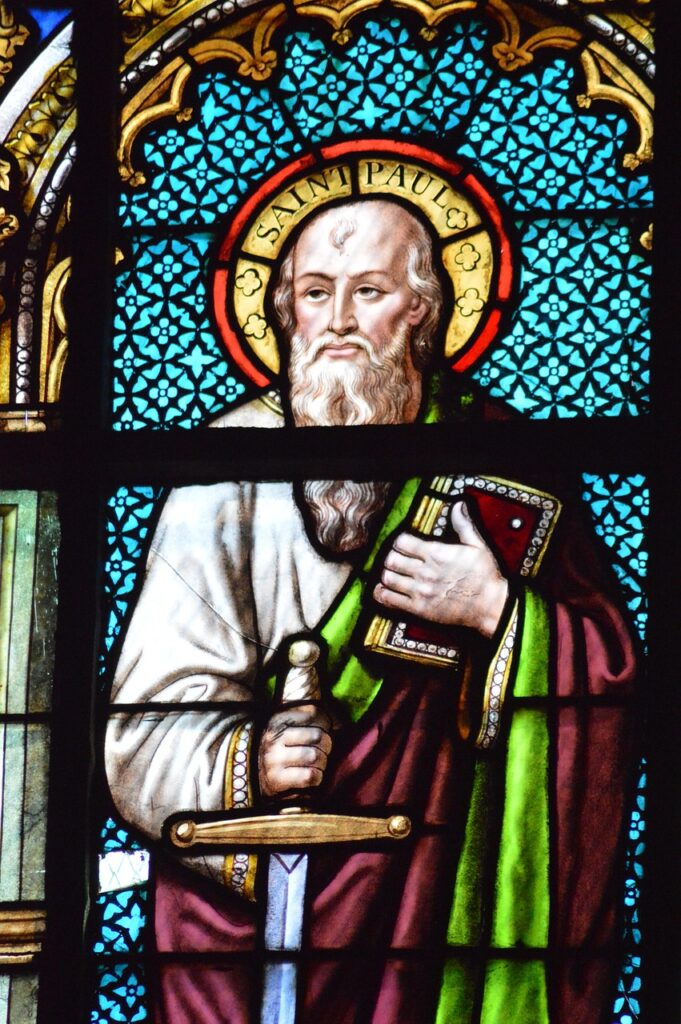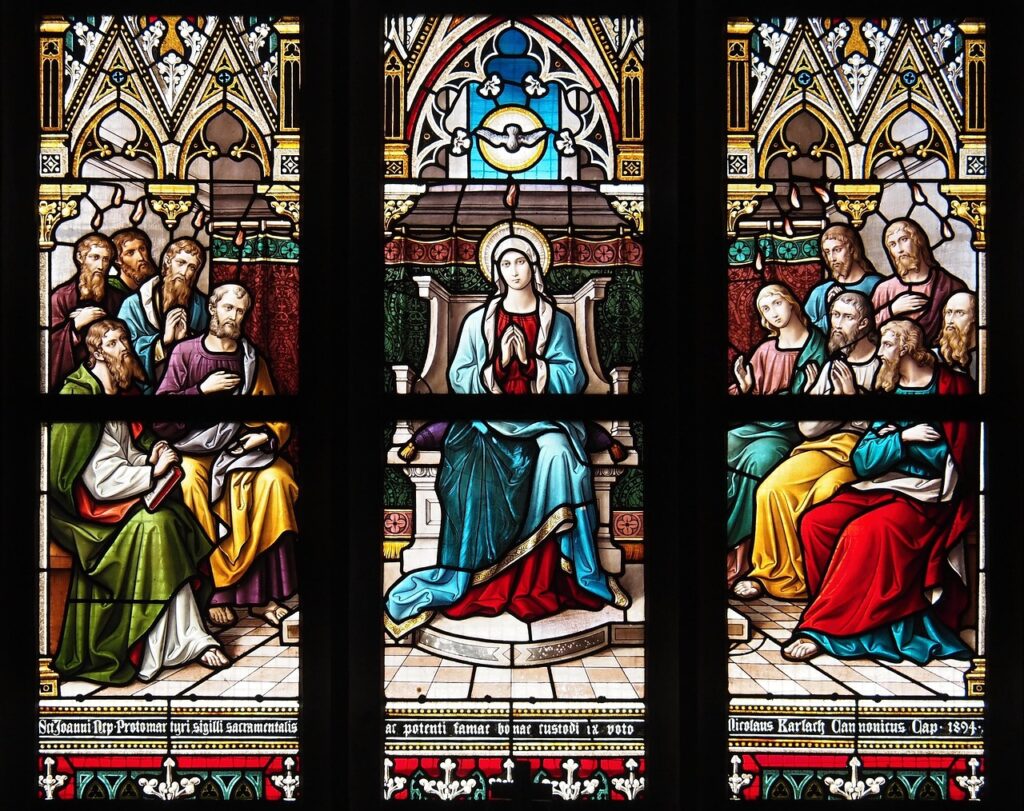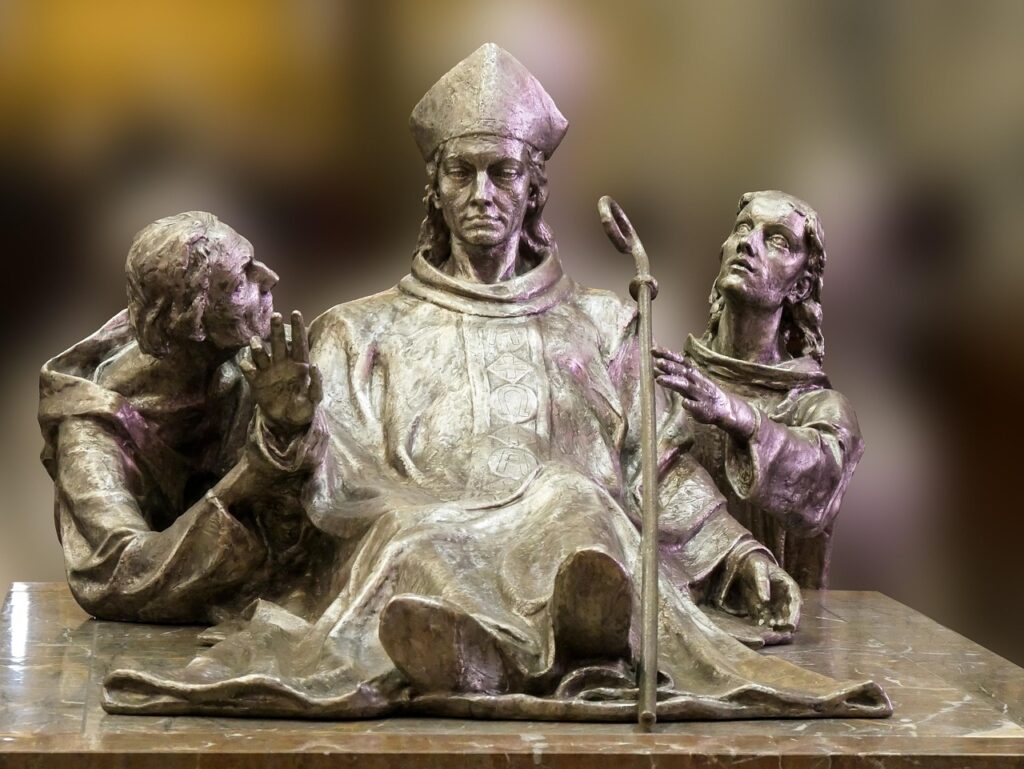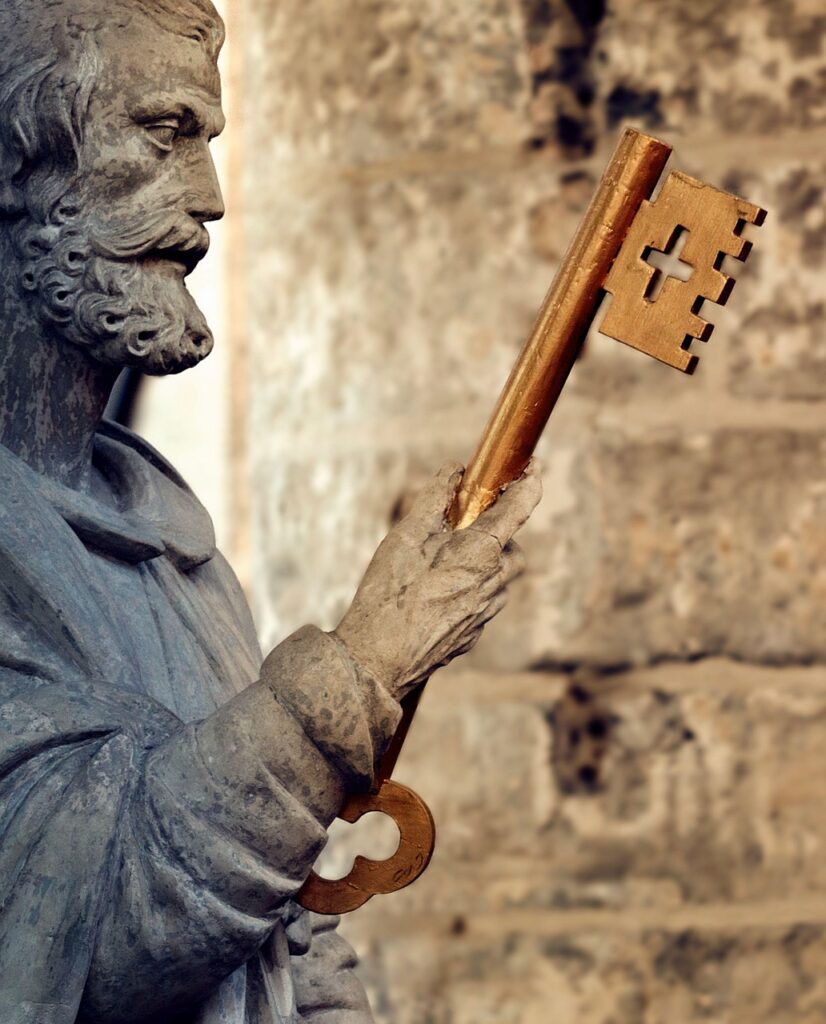
In the annals of history, some figures stand out not just for their public achievements, but for the dramatic, deeply personal choices that shaped their destinies and, in turn, profoundly influenced the world. We often hear names, but rarely get to truly peek behind the curtain of their early lives, their struggles, and the pivotal moments that transformed them. Today, we’re diving deep into the captivating journey of one such individual, a man whose name is synonymous with one of the most foundational texts in Western civilization: Matthew the Apostle.
His story isn’t just a collection of historical facts; it’s a testament to radical change, unwavering dedication, and a life lived with extraordinary purpose. Imagine someone leaving a lucrative, if perhaps controversial, career behind to follow a path entirely unknown, driven by a conviction so strong it would lead him across continents and, eventually, to an ultimate sacrifice. This is the kind of personal narrative that transcends time, offering insights into human nature, faith, and the courage to embark on an unforeseen adventure.
So, prepare to be captivated as we pull back the layers on Matthew’s life. We’ll explore the unexpected turn that led him away from the world of commerce, the enduring mysteries surrounding his identity, his tireless work spreading a message across nations, and the lasting impact of his written word that continues to echo through millennia. This isn’t just history; it’s a personal journey of transformation, devotion, and an incredible legacy that truly changed everything.
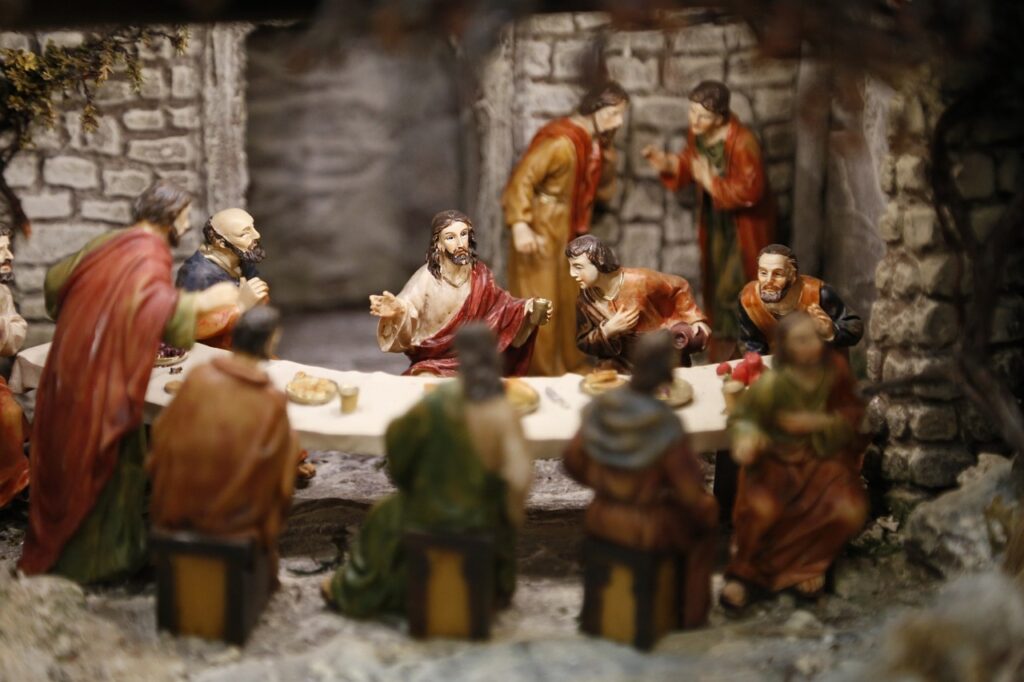
1. **His Unexpected Calling: From Tax Collector to Disciple**Imagine living a life that was both financially comfortable and socially stigmatized. This was the reality for Matthew before his life-altering encounter. The New Testament specifically mentions him in Matthew 9:9 as “a tax collector… sitting at the ‘receipt of custom’ in Capernaum, was called to follow Jesus.” This wasn’t just any job; tax collectors in that era were often viewed with disdain by their own communities, seen as collaborators with the occupying Roman powers and notorious for corruption. It was a role that set you apart, and not in a good way.
Yet, into this unlikely setting, Jesus extended a simple, profound invitation. What must have gone through Matthew’s mind in that moment? The context implies a sudden, decisive action: he simply “got up and followed him.” This instantaneous response speaks volumes about the compelling nature of Jesus’s call and Matthew’s readiness for a different path. It was a radical break from his past, a public declaration of a new allegiance, and an embrace of uncertainty for a promise far greater than monetary gain.
This pivotal moment highlights a theme that resonates deeply: the power of a single choice to redefine an entire existence. Matthew’s decision was immediate and unwavering, setting him on a course that would move him from collecting dues at a customs booth to becoming a foundational figure in a burgeoning spiritual movement. It’s an inspiring reminder that often, the most extraordinary journeys begin with an unexpected invitation and the courage to say, ‘yes.’
Read more about: The Enduring Legacy of Matthew the Apostle: Timeless Principles for a Grounded and Purposeful Life
2. **The Mystery of His Identity: Matthew, Levi, and Family Ties**Adding an intriguing layer to Matthew’s story is the subtle mystery surrounding his name. While he is universally known as Matthew the Apostle, the New Testament offers another glimpse into his identity. In passages parallel to Matthew 9:9, both Mark 2:14 and Luke 5:27 describe Jesus’s calling of a tax collector named Levi, who is identified as “the son of Alphaeus.” This raises questions for many: are Matthew and Levi the same person, or two different individuals?
Church tradition, particularly that of the Eastern Orthodox Church, has largely embraced the understanding that Matthew and Levi are indeed one and the same. It was not uncommon for people in that cultural context to have multiple names, perhaps a birth name and another adopted later, or one used in a specific social context. So, Matthew might have been his apostolic name, reflecting his new life and mission, while Levi was his birth name, connecting him to his past as a tax collector.
What further deepens this identity narrative is the note about Levi/Matthew being the son of Alphaeus. Interestingly, James, another of the Twelve Disciples, is also identified as the “son of Alphaeus” (Mark 3:18). This has led to a fascinating tradition, according to the Eastern Orthodox Church, that Matthew and James, son of Alphaeus, were actually brothers. Imagine the dynamics of two brothers both leaving their former lives to follow Jesus, sharing not just a family lineage but also a profound spiritual calling. It adds a wonderfully relatable, human touch to these ancient figures.
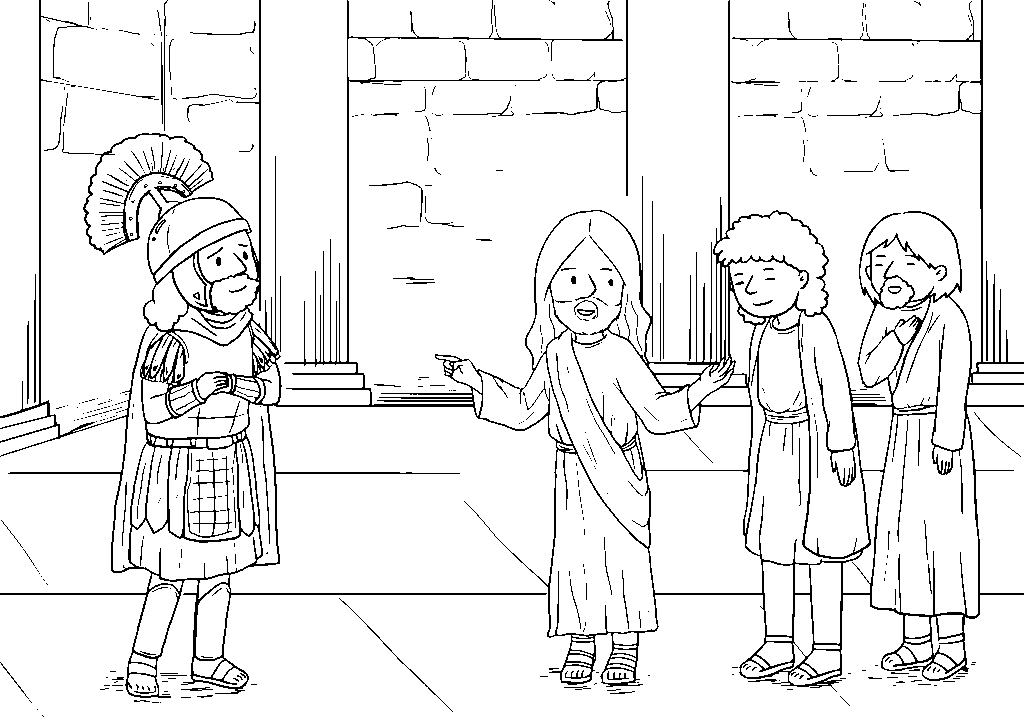
3. **His Devoted Ministry: Following the Master and Spreading the Word**Once Matthew made the monumental decision to follow Jesus, his commitment was absolute. The New Testament chronicles his life as a dedicated disciple, walking alongside Jesus, learning from his teachings, witnessing his miracles, and experiencing firsthand the transformative power of his presence. This period of direct discipleship was undoubtedly formative, shaping his understanding of the message he would later help spread across the world.
After Jesus’s ascension, Matthew’s devotion didn’t wane; it intensified. The context mentions that after the ascension, “the disciples withdrew to an upper room (Acts 1:10–14) (traditionally the Cenacle) in Jerusalem.” This wasn’t a retreat into solitude but a period of collective prayer and preparation. From this sacred space, Matthew, along with the other apostles, embarked on the next crucial phase of their mission. They “remained in and about Jerusalem and proclaimed that Jesus was the promised Messiah,” signaling the very beginnings of the Christian church as an active, evangelistic movement.
Matthew’s post-ascension ministry was characterized by this unwavering dedication to proclaiming Jesus. His journey evolved from being a learner to becoming a leader, taking on the responsibility of sharing the Good News. This tireless commitment to his faith, even in the face of nascent opposition and monumental challenges, truly underscores the depth of his devotion and his pivotal role in laying the groundwork for Christianity’s spread. He was not just a follower; he became a fierce advocate and a foundational pillar.
Read more about: The Profound Legacy of Saint James: Unpacking the Apostle’s Journey and the Enduring Wisdom of His Transformative Epistle
4. **A Global Preacher: From Judea to the Fabled Lands of Ethiopia**Matthew’s story isn’t confined to the familiar landscapes of ancient Israel; his ministry, according to early Church traditions, took him far beyond. The early Church Fathers, revered historical figures like Irenaeus and Clement of Alexandria, attest to his expansive missionary work. They relate that Matthew “preached the gospel to the Jewish community in Judea, before going to other countries.” This initial focus on his own people eventually broadened into a truly international outreach, reflecting a commitment to a universal message.
While ancient writers “are not in agreement as to which other countries these are,” a remarkable consensus emerges from historical sources: “almost all sources mention Ethiopia.” This detail paints a vivid picture of a courageous apostle venturing into distant, unfamiliar lands, facing untold challenges to share his message. Imagine the linguistic barriers, the cultural differences, and the sheer physical demands of such a journey in the ancient world. His willingness to undertake such an arduous mission speaks volumes about his conviction and zeal.
His journey to Ethiopia symbolizes the nascent church’s bold step towards global evangelism, demonstrating an early understanding that the message of Jesus was for all nations. Matthew’s legendary travels underline his role not just as a local preacher but as one of the very first global missionaries. It’s a testament to his dedication that he was willing to go wherever the message called him, carrying hope to far-flung corners of the known world.

5. **His Ultimate Sacrifice: The Martyrdom in Ethiopia**Matthew’s unwavering dedication ultimately led to the supreme sacrifice, a testament to his profound faith. Both the Catholic Church and the Orthodox Church uphold the tradition that “Matthew died as a martyr,” a fate that underscores the perilous nature of spreading a new faith in ancient times. Even secular historical texts like the Babylonian Talmud appear to reference his execution in Sanhedrin 43a, adding a fascinating dimension to this account.
The most detailed and compelling tradition regarding his martyrdom places him in Ethiopia, a land he reportedly evangelized with great success. During his ministry there, Matthew is said to have converted and consecrated Ephigenia of Ethiopia, the virgin daughter of King Egippus, to God. This act of spiritual guidance set the stage for a dramatic confrontation when King Hirtacus, Egippus’s successor, became smitten with Ephigenia and desired her hand in marriage. Hirtacus sought Matthew’s influence to persuade the newly consecrated nun to marry him.
Matthew, upholding Ephigenia’s sacred vows, refused to compromise his principles. The story recounts that he invited King Hirtacus to liturgy the following Sunday, not to persuade Ephigenia, but to publicly rebuke the king for his lustful desires, reminding him that she was now “the bride of Christ.” This bold, public stand against royal power had fatal consequences. “The enraged King thus ordered his bodyguard to kill Matthew who stood at the altar, making him a martyr.” It’s a powerful, tragic, yet incredibly inspiring narrative of faith over fear, a personal conviction held steadfast even unto death.
Read more about: The Enduring Legacy of Matthew the Apostle: Timeless Principles for a Grounded and Purposeful Life
6. **The Legacy of His Gospel: A Foundational Text for Generations**Beyond his personal ministry and ultimate sacrifice, Matthew’s most enduring and impactful legacy is undoubtedly the Gospel that bears his name. Early Church tradition, a unanimous voice through the centuries, “holds that the Gospel of Matthew was written by the apostle Matthew.” This attribution solidified his place not just as a follower of Jesus, but as a central figure in recording and transmitting his teachings for future generations. Imagine the immense responsibility of capturing the essence of Jesus’s life and words in a cohesive narrative.
This tradition finds its earliest written support with the early Christian bishop Papias of Hierapolis, dating from approximately AD 60–163. Papias, as cited by the Church historian Eusebius, provides a crucial insight: “Matthew collected the oracles [in Greek, logia: sayings of or about Jesus] in the Hebrew language [Hebraïdi dialektōi], and each one interpreted [hērmēneusen – perhaps ‘translated’] them as best he could.” This quote suggests that Matthew was not merely a passive recorder, but an active compiler and interpreter of Jesus’s sayings, giving his Gospel a unique authority rooted in his direct witness.
The idea of Matthew “collecting the oracles” underscores the deliberate and painstaking effort involved in creating such a pivotal document. This wasn’t a casual endeavor but a meticulous undertaking aimed at preserving the core teachings of Jesus. His Gospel became a cornerstone for early Christian communities, providing a structured account that illuminated Jesus’s identity as the Messiah and offered profound instruction for living a life of faith. It’s a literary achievement whose influence simply cannot be overstated.
Read more about: The Transformative Journey of Paul the Apostle: A Deep Dive into His Life, Conversion, and Enduring Theological Legacy
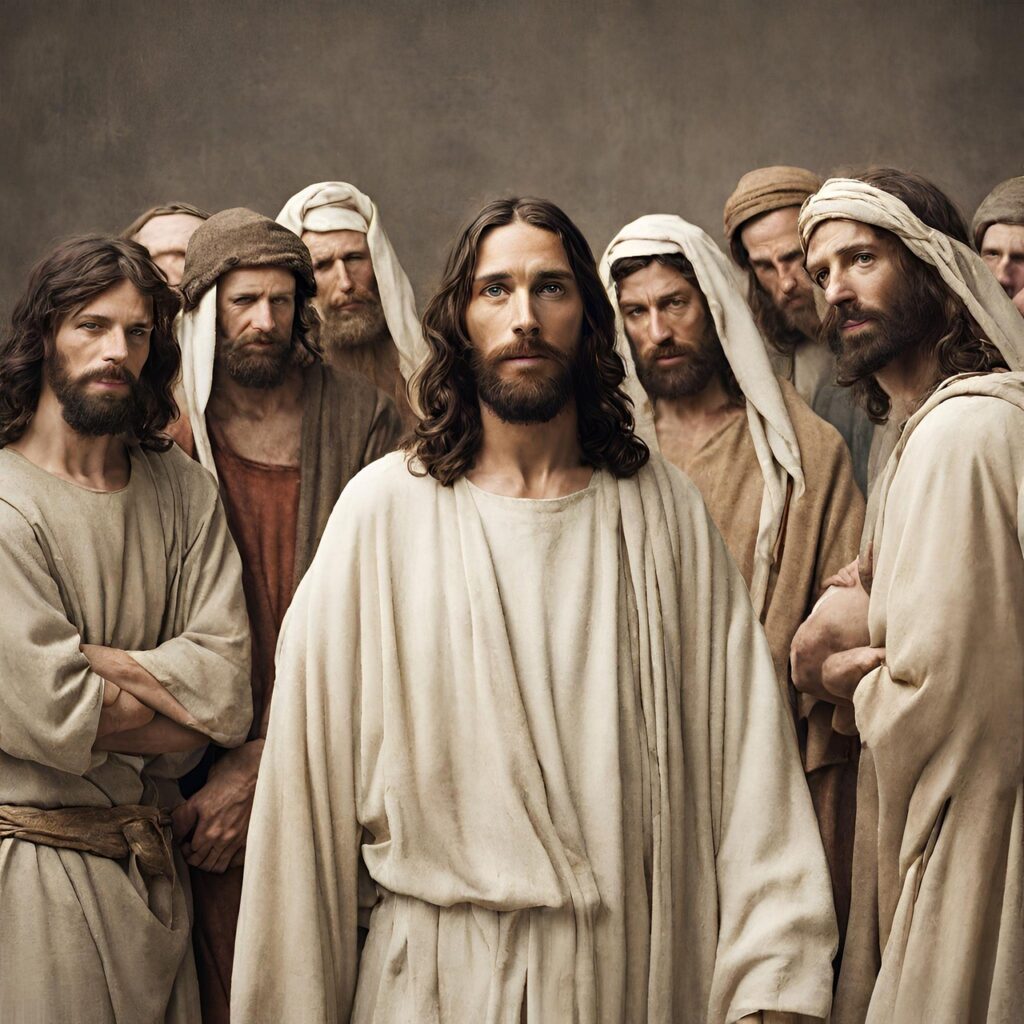
7. **The Language of His Message: The Hebrew Gospel Tradition**Further enriching the fascinating story of Matthew’s Gospel is the early Church tradition regarding its original language. Beyond simply attributing the work to Matthew, revered theologians like Origen (c. 184–c. 253) provide a compelling detail: he “indicates that the first gospel was written by Matthew, and that his gospel was composed in Hebrew near Jerusalem for Hebrew Christians and translated into Greek.” This suggests a deeply intentional audience and context for Matthew’s initial writing.
Picture Matthew, living and teaching in the vibrant, Jewish-Christian community of Jerusalem, meticulously crafting his account in Hebrew, the sacred language of his people. This choice would have made his Gospel immediately accessible and highly resonant for his target audience, emphasizing Jesus’s Jewish heritage and his fulfillment of Old Testament prophecies. The notion that “the Hebrew original was kept at the Library of Caesarea” adds an intriguing element to the historical narrative, hinting at the physical existence of this foundational text in its earliest form.
The journey of this “Hebrew original” continued through history, with mentions that “sometime in the late fourth or early fifth century the Nazarene Community transcribed a copy for Jerome, which he used in his work.” This underscores the enduring importance and reverence for this early version of Matthew’s Gospel, sometimes referred to as the Gospel according to the Hebrews or the Gospel of the Apostles. While modern scholarship offers different perspectives, this tradition highlights the profound cultural and linguistic roots of Matthew’s work, connecting his message directly to its earliest Jewish-Christian recipients and illuminating the rich tapestry of early Christian textual history.
Read more about: The Enduring Legacies of James: A Chronicle of Pivotal Figures and Profound Teachings
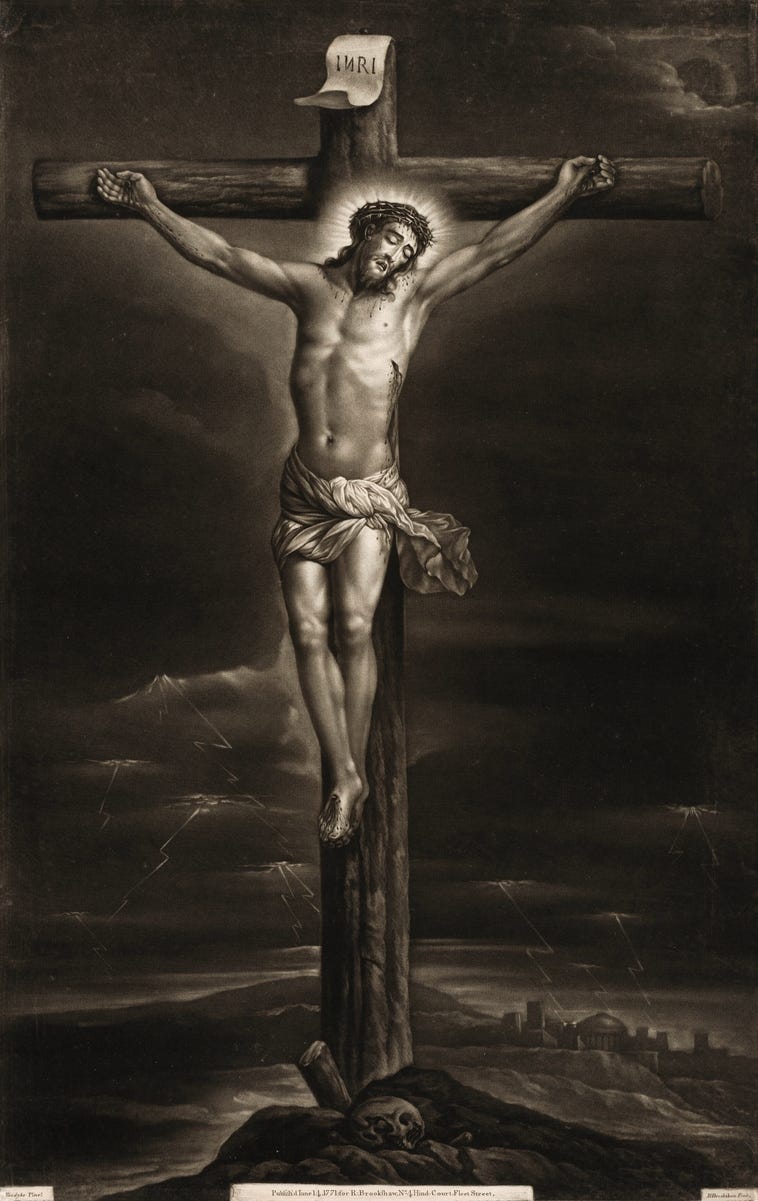
8. **His Enduring Veneration: A Saint Across Christian Traditions**It’s truly remarkable how a figure from antiquity continues to inspire and be revered across so many different corners of the world, even millennia later. Matthew the Apostle, whose life journey we’ve been tracing, holds a special place of honor, recognized as a saint in some of the most prominent Christian traditions globally. This widespread veneration speaks volumes about his profound and lasting influence, a testament to a life lived with extraordinary purpose.
Perhaps one of the most tangible connections to his earthly presence is his tomb, which, according to sacred tradition, lies nestled in the crypt of Salerno Cathedral in southern Italy. Imagine standing in that ancient space, knowing you’re in the presence of a man whose words and actions have shaped so much of recorded history. It’s a truly humbling thought, connecting us directly to his incredible legacy in a very physical way.
In the vibrant tapestry of the Roman Catholic Church, Saint Matthew is celebrated with a dedicated feast on September 21st. This annual observance is a beautiful way for millions to pause and reflect on his life, his pivotal role as an apostle and evangelist, and the enduring message he helped bring to the world. It’s a moment of remembrance and gratitude for his unwavering faith and profound impact.
The Lutheran tradition also holds Matthew in high esteem, with the Evangelical Lutheran Church in America and the Lutheran Church—Missouri Synod both remembering him with a feast on September 21st. This shared recognition across denominations underscores the universal appeal of Matthew’s story and his significance as a foundational figure in Christian theology and history, bridging various branches of the faith.
Similarly, the Anglican communion commemorates Matthew with a festival on September 21st, further illustrating the widespread respect he commands. For the Eastern Orthodox Church, Matthew’s veneration is celebrated with not one, but two significant feast days: June 30th (July 13th on the Julian calendar) for the Synaxis of the Twelve Apostles, and November 16th (November 29th) as his primary Feast Day. This dual commemoration reflects the deep reverence for his apostolic work and his enduring spiritual presence within the Orthodox faith.

9. **Matthew in Art: The Winged Man and Masterpieces**Beyond the solemn traditions of veneration, Matthew the Apostle has also left an indelible mark on the world of art, serving as an enduring muse for countless artists throughout history. Like the other evangelists, he is frequently depicted in Christian art with a specific symbolic companion, one of the four living creatures described in Revelation 4:7. It’s a fascinating visual tradition that adds layers of meaning to his artistic representations.
For Matthew, this symbolic companion takes the form of a winged man. This particular emblem is believed to represent the human aspect of Jesus, as Matthew’s Gospel uniquely emphasizes Jesus’s genealogy and his role as the Son of Man, highlighting his earthly origins and humanity. It’s a powerful visual cue that instantly identifies him and communicates a key theological theme from his written work, grounding the divine in the relatable human experience.
When we talk about Matthew’s presence in art, it’s impossible not to mention the monumental contributions of the Italian Baroque master, Caravaggio. His three iconic paintings of Matthew, housed in the Contarelli Chapel within the church of San Luigi dei Francesi in Rome, are undeniably among the landmarks of Western art. These aren’t just paintings; they are dramatic narratives captured on canvas, brimming with raw human emotion and divine encounter.
Caravaggio’s works compellingly depict Matthew’s initial encounter with Christ, specifically the moment he is called from his profession as a tax gatherer. The dramatic chiaroscuro, the intense human emotion, and the relatable figures draw viewers into that pivotal scene, reminding us of the unexpected and transformative nature of Jesus’s call. It’s a vivid artistic testament to Matthew’s radical personal journey, making the ancient story feel incredibly immediate and human, truly a work that transcends time.
10. **Bridging Faiths: Matthew’s Place in Islam**The story of Matthew’s impact extends far beyond Christian traditions, demonstrating his significant resonance across diverse spiritual landscapes. Interestingly, the Quran, the central religious text of Islam, speaks of Jesus’ disciples—or “helpers to the work of Allah,” as it refers to them—but doesn’t explicitly name them. Yet, Matthew’s presence is clearly recognized and honored within Islamic scholarship, reflecting a shared spiritual heritage.
It’s within the rich tapestry of Muslim exegesis and Quran commentary that the names of these disciples are lovingly preserved, and Matthew is consistently included among them. This oral and written tradition bridges centuries, reflecting a shared appreciation for the spiritual figures associated with Jesus, even if the narratives differ in detail. It’s a beautiful example of common ground and mutual respect between distinct faiths.
What’s particularly compelling is that Muslim exegesis preserves a tradition remarkably similar to Christian accounts regarding Matthew’s missionary journeys. It is said that Matthew, known as “Mattā” in this tradition, alongside Andrew (“Andirāwas”), embarked on a journey to Ethiopia to preach the message of God. This echoes the Christian tradition of Matthew’s expansive evangelistic work, showcasing a remarkable convergence in their respective historical memories and highlighting his global influence.

11. **Honored as a Prophet: Matthew in the Druze Faith**Venturing further into the mosaic of world faiths, we discover that Matthew the Apostle holds a uniquely esteemed position within the Druze faith, a monotheistic religion primarily found in the Middle East. Druze tradition honors several “mentors” and “prophets,” and among these revered figures, Matthew the Apostle is recognized and honored as a prophet. This designation underscores the profound respect for his spiritual contributions and enduring wisdom.
In the Druze tradition and doctrine, Matthew the Apostle is specifically respected for his profound contributions to spiritual knowledge and guidance. The Druze faith teaches that Christianity itself is to be “esteemed and praised,” viewing the Gospel writers, including Matthew, as “carriers of wisdom.” This perspective highlights a deep appreciation for the foundational texts and figures of Christianity, seeing them as integral to a broader understanding of divine truth and enlightenment.
Adding another layer of fascination is the significance of the number five within the Druze faith. It’s believed that great prophets often appear in groups of five, a concept that structures their understanding of spiritual lineage and divine manifestation. This numerical pattern applies to various historical periods, linking revered figures across different eras and cultures.
For instance, in the time of the ancient Greeks, this prophetic quintet was represented by towering intellects such as Pythagoras, Plato, Aristotle, Parmenides, and Empedocles. Fast forward to the first century, and this sacred group of five takes on a distinctly early Christian flavor, consisting of Jesus Christ, John the Baptist, Saint Matthew, Saint Mark, and Saint Luke. What incredible company to be in!
This inclusion places Matthew directly within a distinguished lineage of major prophetic figures within Druze theology. It’s a powerful testament to his cross-cultural significance, showcasing how his life and teachings have been woven into the fabric of a faith that values spiritual insight and the wisdom passed down through revered individuals like him, truly a remarkable convergence of respect.
Read more about: The Enduring Legacy of Matthew the Apostle: Timeless Principles for a Grounded and Purposeful Life
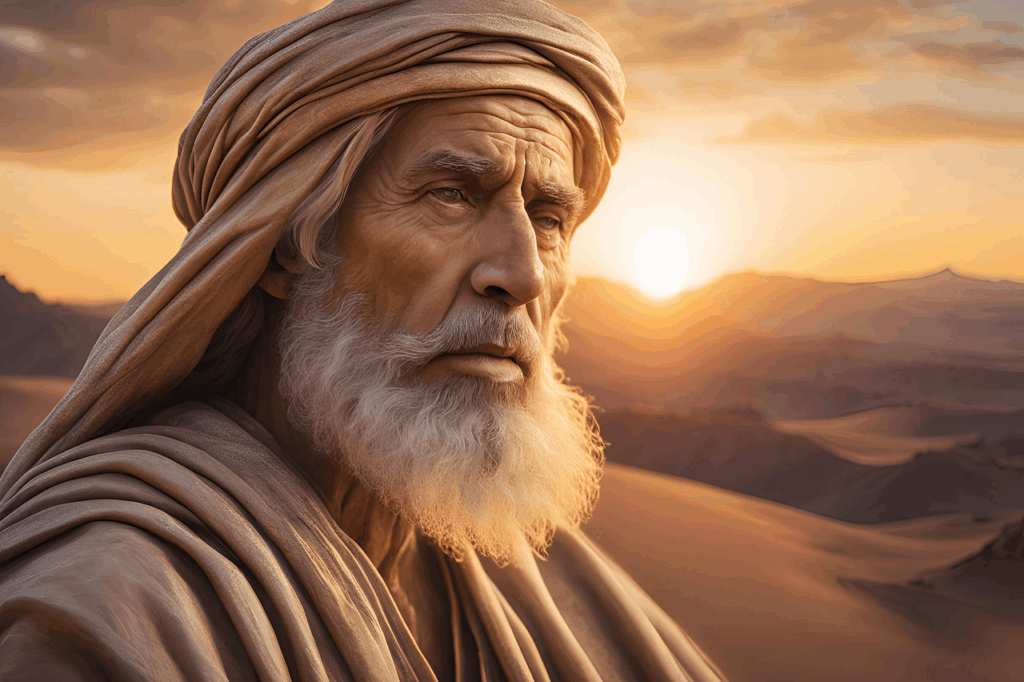
12. **Architectural Narratives: Depicting Matthew’s Story in Stone**The legacy of Matthew the Apostle isn’t just confined to ancient texts, theological discourse, or painted canvases; it’s literally etched in stone, becoming an enduring part of our shared architectural heritage. One particularly poignant example can be found in the Basilica of Annunciation in Nazareth, where a beautifully crafted capital intricately depicts Matthew the Apostle and a significant part of his story concerning King Eglypus of Ethiopia and his sons.
This isn’t merely a decorative element; it’s a narrative frozen in time. The capital powerfully illustrates Matthew leading the king and his sons away from a menacing demon lurking in the far corner. This visual representation directly correlates with the biblical story, which recounts Matthew successfully converting the king and his family to Christianity, an act of profound spiritual liberation and divine intervention.
The iconography of this capital serves a dual purpose, reaching beyond a simple retelling of a biblical event. While it clearly depicts an act carried out by Matthew in his ministry, it also subtly but powerfully foreshadows his ultimate fate: martyrdom. The presence of the demon, from which Matthew delivers the king and his sons, also implies the struggle and eventual sacrifice he made for his faith, becoming a martyr for the Christian religion, slain for his teachings.
This detailed capital offers a valuable window into the religious understanding and artistic expression of the time period, particularly as Christendom was just beginning to establish its visual language. It conveys deep theological concepts—conversion, deliverance, and martyrdom—through accessible, symbolic imagery, reinforcing the core tenets of the nascent faith for generations to come.
Furthermore, this architectural piece beautifully demonstrates a compelling cross-cultural connection. It links Ethiopia, the land of Matthew’s reported missionary work and martyrdom, with Nazareth, a pivotal site in Christian history, through the enduring power of sacred art. It’s a testament to how Matthew’s story resonated across geographies and was celebrated in the very structures built to honor faith, creating a dialogue between distant lands.
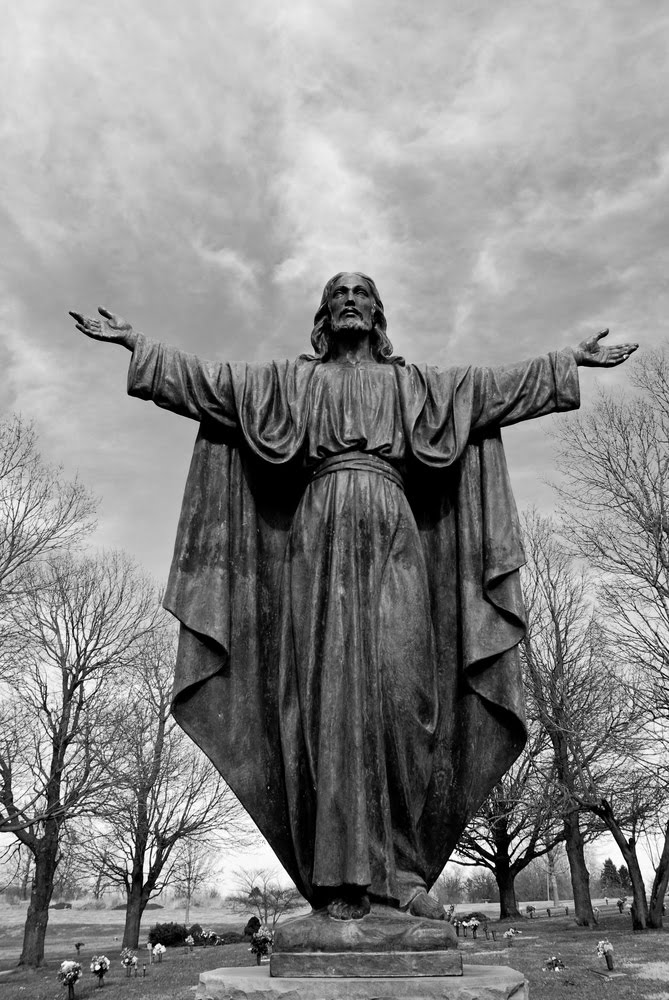
13. **The Gospel’s Enduring Purpose: Proving Jesus as Messiah**Beyond his personal story and the veneration he receives, Matthew’s most profound and continuing influence stems directly from the Gospel he authored. It was meticulously crafted with a clear and compelling purpose: to unequivocally prove to his Jewish readers that Jesus was, without a doubt, their long-awaited Messiah. This wasn’t just a historical account; it was a powerful theological argument woven into a narrative designed to speak directly to the hearts and minds of his immediate audience.
To achieve this monumental goal, Matthew artfully wove together Jesus’s life and ministry with the ancient prophecies of the Old Testament. While all the Gospel writers referenced the Old Testament, Matthew made this connection particularly explicit and central to his narrative. He strategically included more direct quotations and allusions to the Old Testament than any other New Testament author, demonstrating deep scholarly and theological intent.
He even highlighted nine specific “proof texts” that are unique to his Gospel, such as those found in Matthew 1:22-23 or 2:15, driving home his core message: Jesus perfectly fulfills the ancient predictions of the Messiah. Imagine the profound impact this would have had on a Jewish audience, seeing their sacred texts illuminate the very person of Jesus, providing undeniable evidence of His divine identity.
Matthew’s purpose extended to demonstrating how aspects of Jesus’s life “recapitulated” the history of God’s people in the Old Testament, drawing powerful parallels that underscored Jesus’s divine plan and continuity with divine history. He also emphatically emphasized Jesus’s Davidic lineage, connecting him directly to King David and the messianic promises associated with that royal line. Every single detail served to reinforce his central argument, leaving no room for doubt about Jesus’s identity as the promised King.
Read more about: Unveiling the Apostle: Matthew’s Epic Journey – From Tax Collector to Evangelist – And the Gospel That Changed Everything!
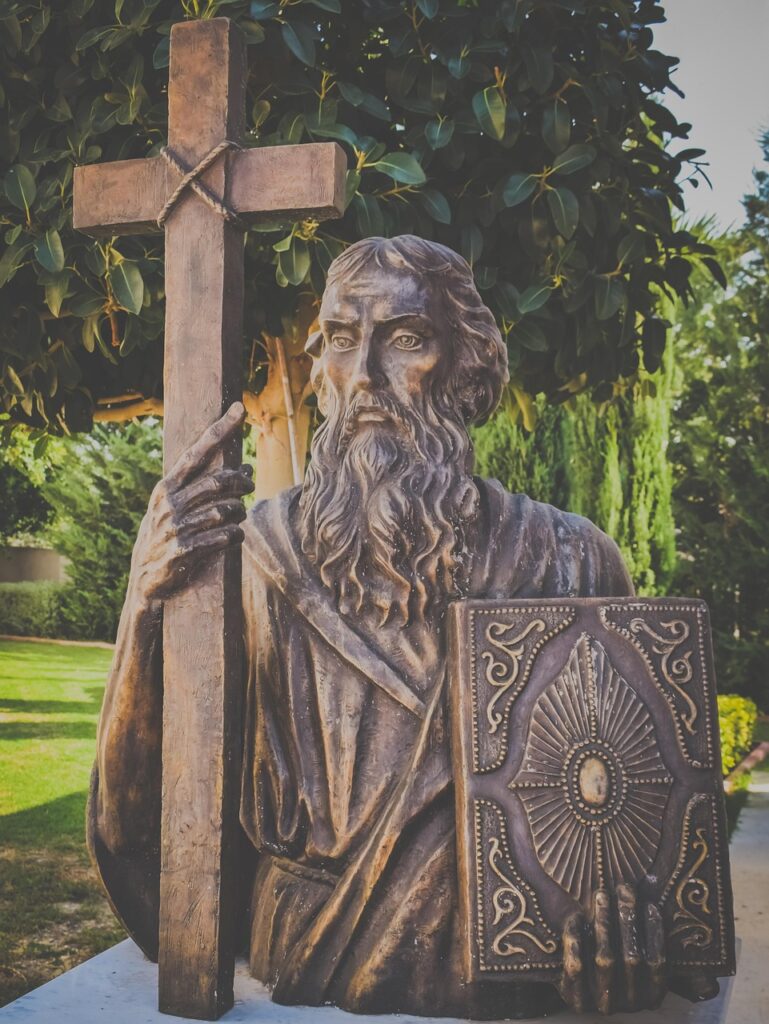
14. **A New Torah, A Universal Call: The Gospel’s Structural and Thematic Influence**Matthew’s Gospel isn’t just a powerful narrative; it’s a work of profound structural and thematic genius that continues to shape Christian thought and practice even today. The very arrangement of his material reveals an artistic touch, meticulously woven around five great discourses, or extended teachings, from Jesus. This deliberate structure is so significant that it’s marked by a recurring refrain, “When Jesus had finished saying these things,” after each major section (e.g., 7:28, 11:1, 13:53, 19:1, 26:1).
Many scholars suggest that this five-fold division is no mere coincidence, but a deeply symbolic choice. It’s believed that Matthew intentionally modeled his book on the structure of the Pentateuch, the first five books of the Old Testament—the revered Torah. This comparison is incredibly profound, subtly positioning Jesus’s teachings as a “new Torah,” and Jesus himself as a “new and greater Moses,” delivering new, authoritative divine instruction for God’s people.
While Matthew’s Gospel was initially penned for a Greek-speaking Jewish audience, evident in his numerous Old Testament allusions and his use of Jewish terminology like “kingdom of heaven,” his vision was far from exclusive. He meticulously recorded the coming of the Magi, non-Jews, to worship the infant Jesus (2:1-12), signaling an early indication of the message’s broader reach and universal appeal right from the outset.
Crucially, Matthew culminates his Gospel with the powerful “Great Commission” (28:18-20), a definitive mandate for his followers to “go and make disciples of all nations.” This universal outlook, embedded within a deeply Jewish framework, demonstrates that while his immediate audience was Jewish, Matthew understood the message of Jesus was ultimately for everyone, breaking down barriers and extending an invitation to the entire world, irrespective of their background.
This grand sweep from Jewish fulfillment to global evangelism, encapsulated within a divinely structured narrative, showcases Matthew’s enduring genius. His Gospel remains a foundational text, guiding believers across centuries, not only through its account of Jesus’s life but also through its careful theological design and its clear, unwavering call to discipleship for all humanity. What an extraordinary vision for the future of faith!
And there you have it—the incredible, multi-faceted journey of Matthew the Apostle. From his unlikely calling as a tax collector to his ultimate sacrifice as a martyr, from the pages of his foundational Gospel to his veneration across global faiths and his enduring presence in art and architecture, Matthew’s life is a testament to the transformative power of conviction and purpose. His story isn’t just a chapter in ancient history; it’s a living narrative that continues to inspire, to challenge, and to connect us to a legacy that truly changed everything. What an extraordinary life, filled with purpose, passion, and an impact that resonates still today!

